The Partnership: How Making ‘Nyad’ Employed The Documentarian Skills Of Chai Vasarhelyi And Jimmy Chin & Evolved Their Marriage Too
- Oops!Something went wrong.Please try again later.
- Oops!Something went wrong.Please try again later.
- Oops!Something went wrong.Please try again later.
- Oops!Something went wrong.Please try again later.
- Oops!Something went wrong.Please try again later.
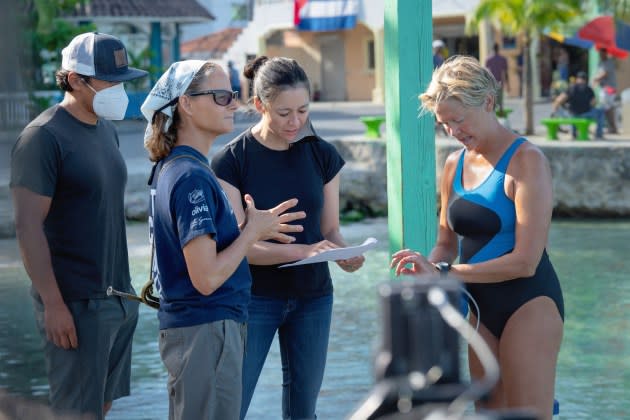
Endurance and single-minded determination have been the focus of filmmaking duo Chai Vasarhelyi and Jimmy Chin with their documentary films Free Solo, Meru and The Rescue, and now, with Nyad, they examine those themes in a narrative feature, with Annette Bening in the starring role of long-distance swimmer Diana Nyad, and Jodie Foster as her coach and best friend Bonnie Stoll. Based on Nyad’s memoir, Find a Way, the film follows Nyad’s multiple attempts to make the 110-mile open ocean swim from Cuba to Florida, dodging sharks and dangerous jellyfish and weathering brutal waves. When Nyad finally succeeds at the age of 64, her message is, “It’s never too late to follow your dream.” Here, Vasarhelyi and Chin look back on how their documentarian skills fed into recreating an epic seafaring experience, and how both their marriage and their working relationship evolved as a result.
DEADLINE: How did you first connect to Diana Nyad’s story?
More from Deadline
CHAI VASARHELYI: I vividly remember when she did [the swim] in 2013. I was eight and-a-half months pregnant with our daughter, and it was our first child. I was going through that phase where I was thinking, Britney Spears has three kids, how hard could it be? I was trying to find all these reasons not to feel sorry for myself.
JIMMY CHIN: Britney Spears has three kids? [Editor note: Spears has two children.]
VASARHELYI: Then I was like, Oh my gosh, Diana Nyad is 64. She just did this whole amazing thing. She swam 110 miles. I’ll be fine. It was less the physical part for me about pregnancy than the psychological, like, is my life going to change? Can I still work? But we have always been like moths to a flame, and maybe it’s because of our partnership, we’re interested in these questions about individuals who push the boundaries, who have the audacity to dream and not accept no for an answer, but also the perseverance and the grit to put the work in.
After Free Solo and The Rescue and Meru, we were really committed to exploring that idea in a woman’s experience. So, we were looking around, and I think that’s where Wild Life, our most recent doc, came from. But when we were sent the script for Nyad, we looked at each other and just said, “Diana Nyad is just that. She’s not afraid to have this crazy dream. She’s not afraid to want it desperately. She’s not afraid to be entirely herself.” So that, coupled with this idea that it was clear that we had an opportunity to create two very rich roles for two extraordinary female actors of a certain age and how rare that was, we were like, “OK, we want to do this. Let’s figure it out. We’ve never made a narrative feature before, but these are the reasons why we want to do it.”
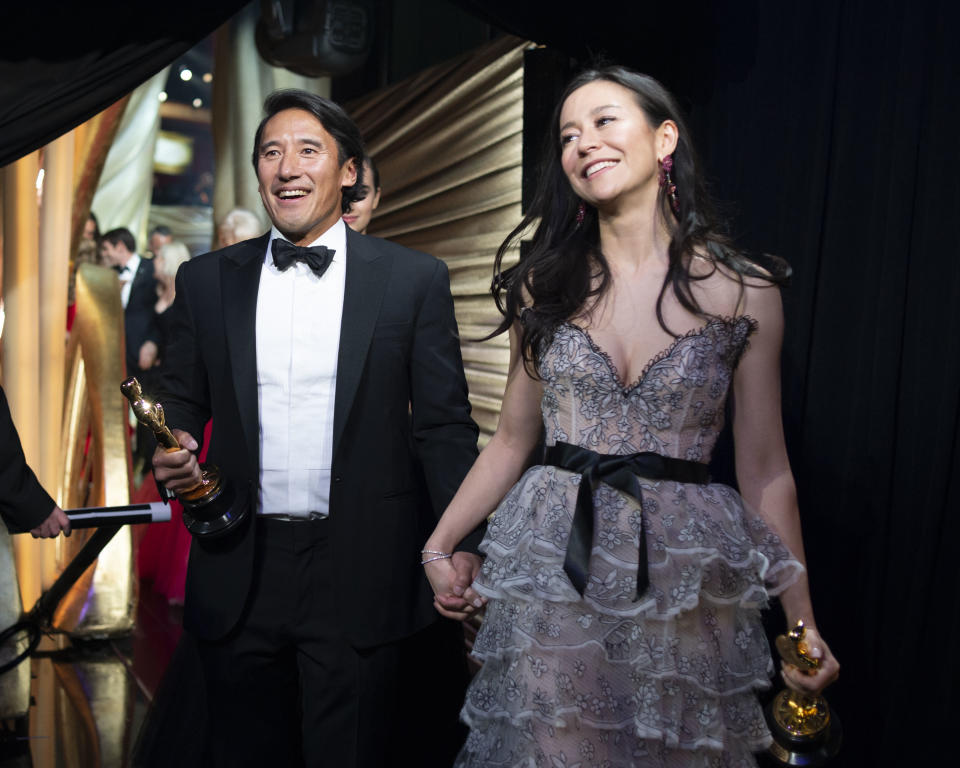
DEADLINE: How did your experience with documentary fimmaking prepare you for making a narrative feature? You usually deal with people who don’t necessarily want to show off about what they’re doing, so was working with actors a relief in comparison?
VASARHELYI: I would say the principal difference between making a nonfiction film and a narrative feature with Jodie Foster, Annette Bening and Rhys Ifans, is that in nonfiction, our job is to be your closest listener, your best observer, and let life happen, and then afterwards, after we’re finished shooting, we make sense of it and try to put something together that honors what you witnessed. Whereas making a fiction film, we had partners who are the best of the best at what they do in their craft, and they’re as committed, if not more than you, to bringing to life this character. So, it felt like a superpower.
In terms of the documentary instincts, we’re different because Jimmy has had a lot of commercial experience working with big crews. And for me, we work on our docs with the same people over and over again. They know us really well. So, it was incredibly intimidating to be in front of so many people, and directing Annette Bening and Jodie Foster. But once a good decision was made, my first good decision, it was this relief because I understood that the 20 years of experience and the instincts absolutely translated. Then, additionally, when it came to the edit, coming from the gnarly, gritty edit world of nonfiction…
CHIN: I think it for sure gives you an edge, right?
VASARHELYI: I’m not trying to say it gave me an edge. I’m saying it eventually gave me an edge.
CHIN: Well, because you have to find the story and rework and break it apart over and over and over again, and I think when you have a script, you can push the edges of the edit because you have a baseline to work from.
VASARHELYI: But it’s different because in docs we have 1,000 hours of footage, so there are endless options, whereas in fiction, we only shot X amount of scenes, and most of our scenes are on the screen, and we probably had an incredibly limited amount of footage to work with because we were incredibly ambitious and didn’t have many takes.
Also, I think, coming from docs, the challenges always provide the opportunity. So we couldn’t afford to shoot Diana at age 28, and we didn’t know if it would work to explore the nonfiction footage of Diana [at 28]. That Johnny Carson clip of her, it’s the best character moment. Money can’t buy that. I think ultimately, it’s a real testament to Annette’s performance that she brings such truth to the character that your mind somehow accepts that there are two Dianas and they’re both true.
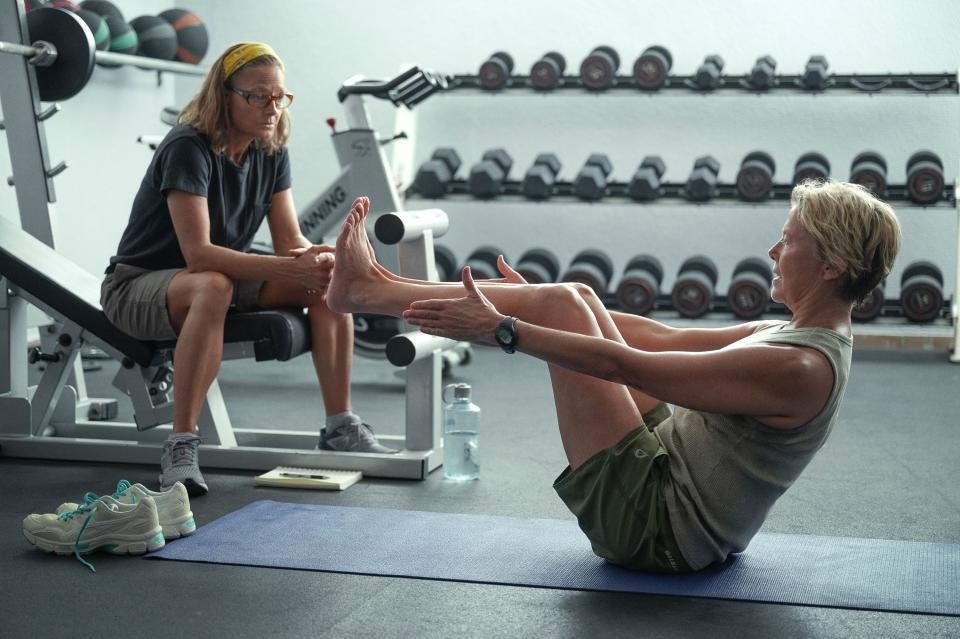
DEADLINE: How do you divide tasks between you? Do you just instinctively step back and forth? Tell me how it works.
CHIN: Well, I think our process with docs… This actually goes back to your previous question, too. Even in nonfiction, you understand when a scene feels authentic and it’s heartfelt. You recognize when something is happening in front of the camera. I think that that instinct certainly carries over in narrative filmmaking. I think we also have a lot of experience working with some of the greatest adventure athletes in the world, in the ski world, surf and skate or climbing and mountaineering, where a big part of your job as a director is just to provide the space and environment for people to perform their best. But in terms of how we work, I think this is our seventh…
VASARHELYI: Sixth.
CHIN: Sixth? Sixth [project] together.
VASARHELYI: God, the kids make it eight.
CHIN: It’s pretty clear what our strengths are. One of the strengths is just that we come from very different points of view. We have a very different outlook. So, when we attack something, I feel like there are no blind spots. We lean on each other in that way for every aspect of the filmmaking.
In this case, on this narrative feature though, we were forced to make these decisions in real time in front of 450 people. It was challenging. We really had to do a lot of prep work so that we had a good sense of what we wanted out of each scene, what we wanted out of each character, what we wanted in terms of the shooting, how we wanted it to look and feel, so that we could show up on set as a unified voice. That’s different than what we’ve done before. In this case, it was a very compressed, high intensity, high pressure, very visible situation where we had to make these decisions together.
VASARHELYI: I think a good example, a way to illustrate this, is Free Solo could not have been made by either one of us alone, and that is basically the strength of the film. In a way, it’s because we’re married, because we are also managing real humans who are children, but, also, it’s like we have a fundamental trust between the two of us. If I ask for something, he knows there’s a reason. If I’m asking for some story point, it has to be shot, even if it’s really hard to do, even if it’s ethically scary, he knows I’ve thought deeply about why I’m asking for it.
At the same time, in terms of the risk assessment, which was the fundamental question of Free Solo, our reputations were on the line, or how I could live with myself as a human was on the line. I trusted Jimmy entirely. We didn’t have that friction or time that had to be spent because it was so fundamental. But with making a narrative feature, we had never been side by side for 50 days, 60 days, making decisions together in front of other people.
DEADLINE: Did that test your relationship?
VASARHELYI: It’s really intense. I think, for me, at least, it was an incredibly refreshing thing to grow creatively in my 40s, after making 11 films and having a 20-year career. It was amazing to grow creatively and be pushed creatively, and have that horrible doubt, all of it. It was also amazing to grow in your marriage, where who knew, after X amount of years of marriage, you can actually change and evolve? I think it just made it clearer to us, because we needed it more, what each other does best.
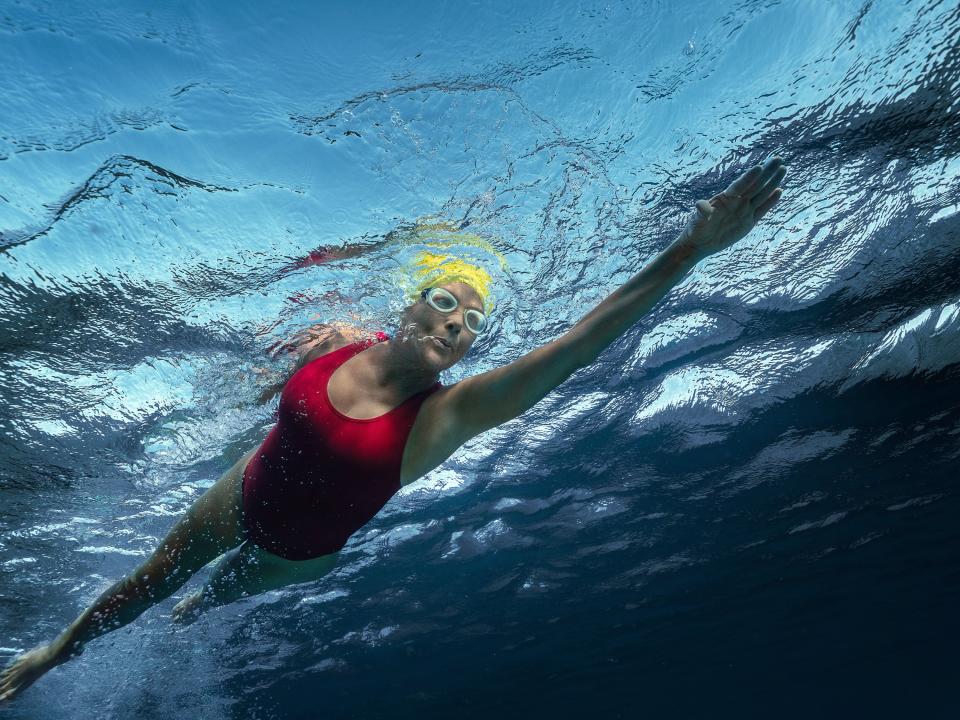
DEADLINE: What were some specific times where you were on the edge of what you could live with, and you had to trust in each other?
VASARHELYI: I think that’s every day. The biggest edgy moment I had had to do with parenting. It was really scary to take our kids out of this very stable environment that we live in and put them in local school in the Dominican Republic. But it was amazing, and it turned out to be the true silver lining of the experience.
But one day when the AD, who’s amazing, was on the radio, and there are 400 people listening on the radio, [he says] “Chai, your nanny wants to know if the kids were coming home for dinner or if you were coming home for dinner.” I had that complete implosion of, “Jimmy and I are the same job description. Why is he asking me?” I was embarrassed a little bit. It was OK because Annette and Jodie are both peak professionals who also are parents, but it was a real turning point for us, where I was like, “OK, we need more support on this side because if you need me to perform in that level, I can’t give all this psychic energy to the sheer logistics of parenthood.”
It was incredibly liberating as a woman and as a professional. It was incredibly meaningful for us, because me being able to be liberated from that and to be able to point to it was very meaningful. Jimmy is great, amazing about it, but just sometimes women and men are different, and we have different cultural and generational pressures. It’s just a different sort of thing. Is that fair?
CHIN: Mm-hmm [nods]…
VASARHELYI: The same thing applied when we were talking about menopause jokes when developing the script. Jimmy had tons to say. [Laughs]
CHIN: Yeah, I had a lot of input.
VASARHELYI: You can’t joke.
CHIN: There were these funny scenes where we were working on the script with Julia [Cox]. It was just you and Annette and Jodie talking about part of the script.
VASARHELYI: It was a tampon joke.
CHIN: The menopause joke. I was just sitting there, and I got up, and I was like, “Can I get anybody coffee?” That’s about as much as I could contribute.
VASARHELYI: I will say, managing 400 people, Jimmy’s amazing. He’s unfazed. For me, I’d rather, I don’t know, hide in an oil drum than try to express my ideas…
CHIN: In front of 400 people?
VASARHELYI: Even though everyone knows I’m very, very forthright, and I like to tell everyone what I’m thinking. But that was terrifying for me. Jimmy, he’s a natural leader, and inspires great confidence and great dedication from our crew. He’s a National Geographic photographer. He has an eye that is precise, that is beautiful, that always strives to push what we can, and that’s the whole thing that we share, is we’re both, I don’t want to say perfectionists, but if we’re going to do it, we’re going to do it the best way we can. So, I never once worried about a shot. I would just try to tell him the shots I thought were important emotionally, and then it would happen. It’s not even trust. It’s an unspoken language, right?
CHIN: Yeah. We were also very lucky because we were working with [DP] Claudio Miranda. I’ve been a DP for a long time, too, so I have particular comfort with that aspect of the filming and working with teams. I think a lot of that also comes from doing a lot of expeditions where you’re working with teams and the stakes are very high and you have to make hard decisions in very challenging situations. So that environment or that kind of tension feels very familiar. I think where I really lean on Chai is in the words and in the script and the script work and in the edit. She’s surgical. I push the DP, she pushes the editor, really pushes the editor.
VASARHELYI: I charm the DP, though.
CHIN: Yes. I guess I don’t really charm the editor.
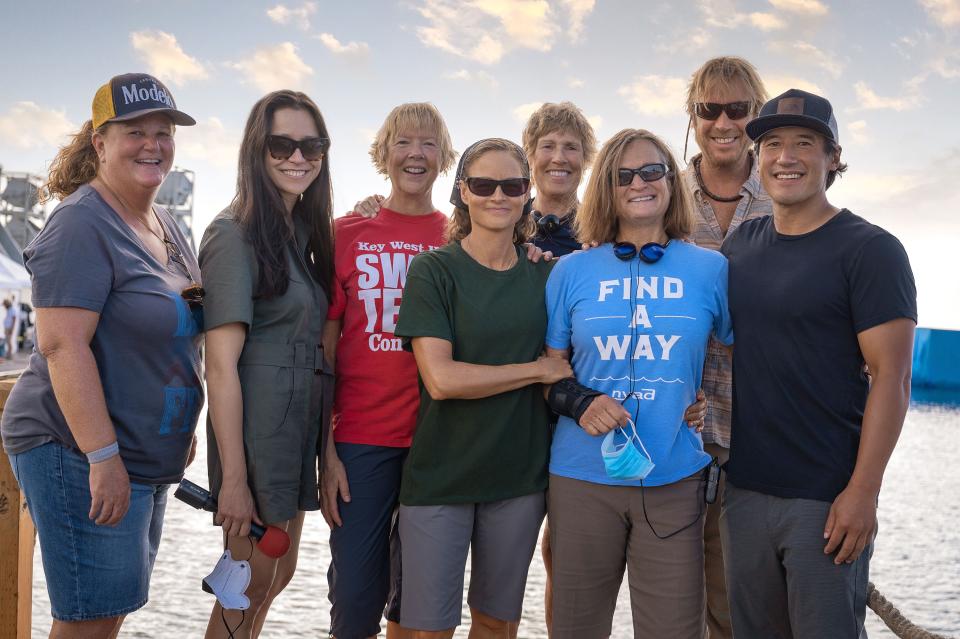
DEADLINE: Tell me some of the specific moments or even great moments that you had with Annette and Jodie where you just thought, “Wow.”
VASARHELYI: Let me say a tiny one. We were on set, and I was like, “Do we need to bring Julia out to add a line [to the script], Jodie?” And she’s like, “I don’t need words to do that.” And she really doesn’t.
CHIN: There are scenes for sure where we were filming with Jodie where we would forget to call cut. We would just be glued, because she would just keep going and you were so present in her performance. With Annette, also, she just committed so deeply to the character and to the swimming. I think we felt a lot of awe and respect for what she brought on set every day. When she was swimming four to six to eight hours a day in the water, it just elevated the entire environment on set because nobody could complain. When your number one is coming in and is throwing down that hard, it really elevates everybody’s game. We just really respected her so much for that level of commitment.
DEADLINE: She spent a year training, right? In terms of using body doubles for any of it, I understand that you didn’t really do that because she wanted to do it herself?
VASARHELYI: We had three amazing body doubles, amazing, world-class, the best of the best stunt women, including ones who were wholly age appropriate. Our first day at the tank, we had a safety check, so the three stunt doubles were there, all the water safety people were there, and she gets into the tank, and she swims, and it was a moment of awe. Not relief, it was awe, because it was effortless. She looked like a marathon swimmer. Warren Beatty and Annette have a beautiful pool at their house, and they also have a really large Newfoundland named Scout who just sits there and barks while she swims. So, we knew she wasn’t going to drown. She’s a natural athlete, but she wasn’t a marathon swimmer. But she’s the type of actor who takes her craft so seriously that she knew that was important. The added bonus was that she’d built up this endurance that allowed us to maximize our shooting time, because even just to get her out of the water and then put her back in is 30 minutes. She was like, “Oh, I can just stay here,” and it was a baking sun. And it was freezing in the water, even though there’s baking sun. It was miserable.
CHIN: She’s badass.
VASARHELYI: Same for Jodie. We never peeked in on the training, and then I saw these costume fitting things, and I was like, “No way.”
DEADLINE: Because she’s ripped?
VASARHELYI: Yes, I was like, are you kidding me? New life goals, new body goals. She’s 60.
CHIN: Before we’d do takes, she’s down doing pushups.
VASARHELYI: And I’m telling some of our younger actors, “Shouldn’t you be doing that?”
DEADLINE: Logistically speaking, you’ve done many, many challenging things in your careers in terms of practicality, but filming all this underwater and then the jellyfish mask and using prosthetics for Annette’s swollen face, tell me the most challenging aspect of all of that.
VASARHELYI: Time.
CHIN: There’s so much pressure in terms of time and scheduling on any shoot, but you add water to it, and everything takes three times, five times as long. We really wanted to try to push at least as much as we could in terms of the cinematography and how you shoot swimming. I think we’ve shot swimming in every possible way we could think of. If we didn’t have the team we had, we couldn’t have made the film. We had Pete Zuccarini underwater. We call him the merman. He’s 6 foot 5, and he can take one breath and swim underwater with a camera system about 2 feet away from Annette and never get in her way, swimming backwards with huge fins.
VASARHELYI: Then we’re in the tank. Taiwan built Claudio Miranda a state-of-the-art water tank for The Life of Pi. If you were to consider that before coming to our film, he just had shot Top Gun: Maverick. On that film, the Navy turned around aircraft carriers, so he always had magic hour.
And our tank, we were very grateful for, but it was only 4 feet deep… It was like he had a Formula One car versus roller skates. I’m not joking. I think he would agree with me. But his team is so tight that they made it work.
It’s one of those things, I think, about this film. It’s like Netflix didn’t make it for kicks. Everyone was there for a real reason. They wanted to see this film made. It’s the only way Netflix went to bat with this film post-pandemic. Everything’s changing, everyone’s cutting budgets. Same thing with Jodie. Jodie doesn’t play a supporting actor, but she wanted to see this film made, and she wanted to see these people brought to life, and she did. We’re really grateful.
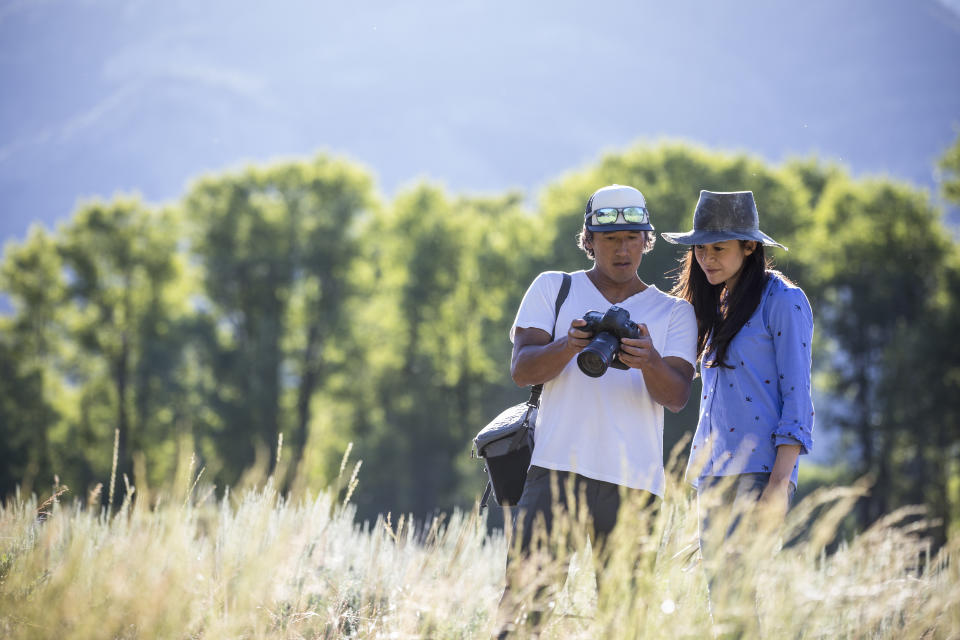
DEADLINE: What does Diana think about the film? What was her feedback?
VASARHELYI: One, she’s an incredibly intelligent person, sort of like Alex Honnold. She speaks multiple languages. She has this illustrious career as a sports journalist, she still writes op-eds all the time. But she did something I don’t think I could do, which is, she let go. She said, “You guys need the space to make the movie you want to make. I can be the stunt double.”
DEADLINE: I love that she offered to be stunt double.
CHIN: She wanted to be. Oh, yeah.
VASARHELYI: She 100 percent offered that. I think, in the previous iteration, she was like, “Why don’t I just play myself?” That’s Diana, right? They came down for a few days on her last day of tank, and that’s where that amazing shot in the end of the film is of her swimming next to Annette. But even with Annette swimming, she didn’t say, “Can I teach you how to get my stroke perfect?” She understood Annette needs to find her own stroke, and it has to be consistent, and that was incredibly important to Annette.
But what they did do, was both Bonnie and Diana spent an enormous amount of time with Jodie and Annette, and they also spent it together as a foursome. So, Jodie and Annette were absorbing their rapport. I think Diana really enjoys the film. She will definitely say, “I think I’m more likable than that,” but Annette Bening is pretty likable at the end of the day. The most fun is when we asked Bonnie what it felt like when she heard that Jodie Foster was playing her.
CHIN: I think Diana likes the fact that this movie’s called Nyad. Bonnie always says, “I aspire to be the person on the screen.”
VASARHELYI: She’s like, “Do I really do this all the time?” [Rubs under nose] I’m like, “Yeah, you kind of do.”
CHIN: I think she’s pretty happy that she has Jodie Foster playing her.
VASARHELYI: I would like Jodie Foster to play me.
DEADLINE: Me too. Next, you’re making a film about Ernest Shackleton. Can I just tell you a weird thing?
VASARHELYI: Are you Shackleton’s granddaughter?
DEADLINE: No, but actually his son proposed to my great-grandmother on a boat bound for Shanghai.
CHIN: No way.
DEADLINE: She turned him down because she was promised to someone else.
VASARHELYI: Did she end up getting off the boat? Did he jump off the boat? I think there’s this generational happenstance that is amazing, as they add to the stories we tell about our lives and how we connect to major historical events, which we should remember, which is why we’re making the Shackleton film. Them finding his boat was an opportunity to revisit the Ernest Shackleton story.
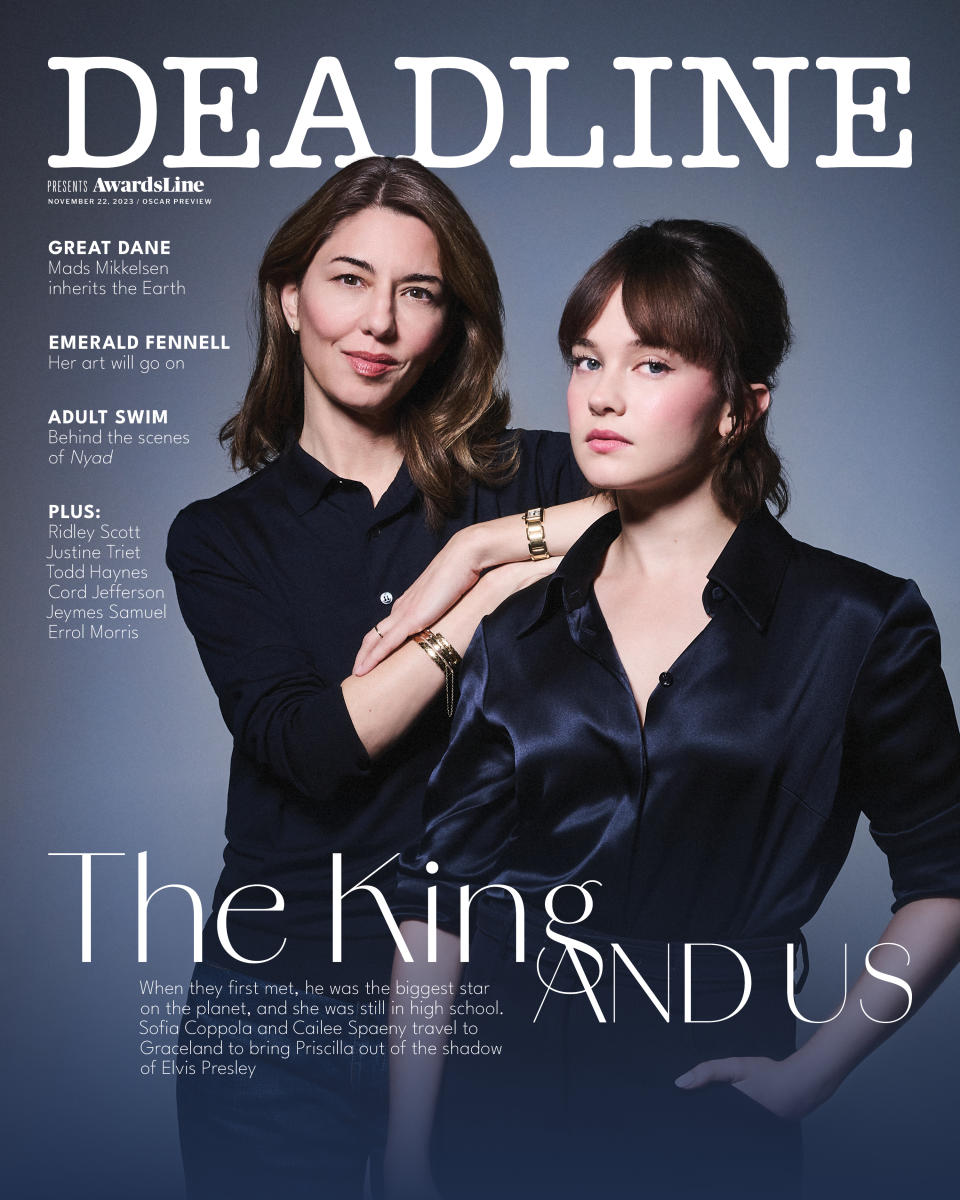
DEADLINE: It’s wild that they found his boat, The Endurance.
VASARHELYI: It’s wild. And the boat is perfectly preserved, like a ghost ship. It’s also a climate change story because they only had access to it because the Antarctic sea ice is melting.
DEADLINE: Will you be making more narrative films like this in the future?
CHIN: I think we’ll always make documentaries. We love docs, but, I think that now that we’ve gotten this first one under our belt, we learned a ton. It’s like you want to take what you’ve learned and push yourself and grow as a filmmaker and a storyteller and see where you can go with another story, another film. So, we’re very interested in making another narrative, but I think, like with all of our work, it has to mean something to us. I guess it’s stating the obvious: you bleed for these films, so it has to matter.
VASARHELYI: I think for us form follows function. For Nyad, this was the right way to tell that story. But, personally, I think we should make an NC-17 gritty, gnarly film, so everyone’s surprised. And maybe we get into Cannes one day.
CHIN: That’s your goal, really?
VASARHELYI: I think it’s a good goal, yeah.
Best of Deadline
2023 Premiere Dates For New & Returning Series On Broadcast, Cable & Streaming
2023-24 Awards Season Calendar - Dates For Oscars, Emmys, Grammys, Tonys, Guilds & More
Da'Vine Joy Randolph To Receive Palm Springs Film Festival's Breakthrough Performance Award
Sign up for Deadline's Newsletter. For the latest news, follow us on Facebook, Twitter, and Instagram.

